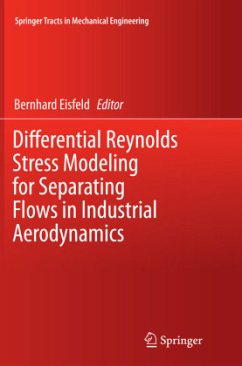
Reynolds Stresses
Versandkostenfrei!
Versandfertig in 6-10 Tagen
23,99 €
inkl. MwSt.

PAYBACK Punkte
12 °P sammeln!
Please note that the content of this book primarily consists of articles available from Wikipedia or other free sources online. In fluid dynamics, the Reynolds stresses (or, the Reynolds stress tensor) is the stress tensor in a fluid due to the random turbulent fluctuations in fluid momentum. The stress is obtained from an average (typically in some loosely defined fashion) over these fluctuations. Averaging and the Reynolds stress To illustrate, here we use Cartesian vector index notation. For simplicity, consider an incompressible fluid: Given the fluid velocity ui as a function of position ...
Please note that the content of this book primarily consists of articles available from Wikipedia or other free sources online. In fluid dynamics, the Reynolds stresses (or, the Reynolds stress tensor) is the stress tensor in a fluid due to the random turbulent fluctuations in fluid momentum. The stress is obtained from an average (typically in some loosely defined fashion) over these fluctuations. Averaging and the Reynolds stress To illustrate, here we use Cartesian vector index notation. For simplicity, consider an incompressible fluid: Given the fluid velocity ui as a function of position and time, write the average fluid velocity as overline{u_i}, and the velocity fluctuation is u''i. Then u_i = overline{u_i} + u''_i. The conventional ensemble rules of averaging are that begin{align} overline{bar a} &= bar a, overline{a + b} &= bar a + bar b, overline{a bar b} &= bar a bar b. end{align} One splits the Euler equations or the Navier-Stokes equations into an average and a fluctuating part. One finds that upon averaging the fluid equations, a stress on the right hand side appears of the form rho overline{ u''_i u''_j} .












